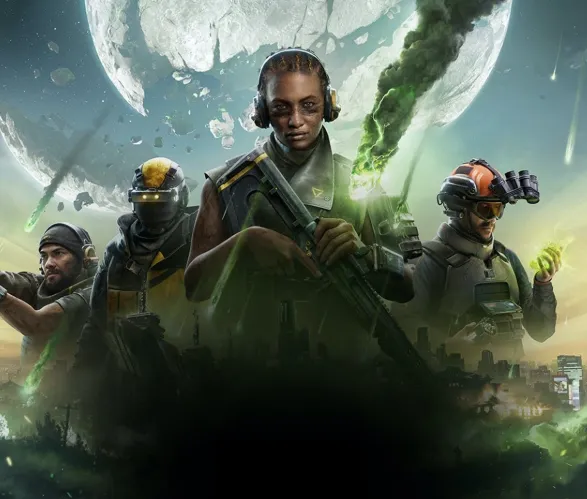Over the last ten years, the gaming industry has shifted dramatically. From the rise of free-to-play titles on mobile devices to the dominance of eSports and live-service platforms, each stage has pushed the boundaries of player engagement. Today, blockchain technology—often referred to as Web3—is introducing yet another wave of transformation. Alongside it, advancements in artificial intelligence are opening new doors for more dynamic, immersive, and personalized gaming experiences.
The merging of Web3 mechanics and AI agents represents more than a technical upgrade—it signals a new era where autonomous systems can navigate decentralized environments, personalize gameplay, and simplify complex blockchain interactions. Yet, while the possibilities are exciting, this path is not without significant challenges.
The Current Hurdles in Web3 Gaming
Complex Entry Points
Getting started with a blockchain-based game is rarely straightforward. New players often need to create digital wallets, manage private keys, and handle crypto transactions before they can even start playing. Compared to the simplicity of logging in with an email address, this can discourage many would-be gamers.
Tokenized Economies
Many Web3 games operate around NFTs and governance or utility tokens. While these mechanics introduce new economic layers, balancing token supply, preventing inflation, and keeping rewards sustainable has proven difficult. Early blockchain games highlighted how fragile these systems can be when demand shifts.
Exploits and Automation
Because real financial value is tied to gameplay, cheating and botting are much more tempting. Traditional anti-cheat measures often fall short in decentralized systems, leaving games open to abuse. Recent cases of players using bots to farm tokens during airdrops show just how widespread the issue can be.
Gameplay Quality
Too often, blockchain titles have been criticized for prioritizing speculation over fun. Many games felt more like trading platforms for NFTs than engaging experiences, which has damaged the reputation of Web3 gaming as a whole.
Retention Issues
Even after players get past the initial setup, keeping them engaged is another challenge. Without fresh content, social depth, and meaningful progression systems, many titles lose momentum once the novelty wears off.
The Rise of AI Agents
Artificial intelligence has matured to the point where it can dramatically influence how games are built and played. In Web3, AI agents can act independently, make decisions in real time, and interact directly with both players and blockchain systems.
Defining AI Agents
An AI agent is essentially a software-driven entity that perceives its environment, interprets what’s happening, and acts with a goal in mind. In gaming, this could mean an NPC that learns a player’s behavior, or a behind-the-scenes system that adjusts token supply to keep the in-game economy balanced.
Why the Timing Matters
Breakthroughs in natural language processing, reinforcement learning, and more efficient computing power have made AI far more capable. Models like GPT-4 and others demonstrate just how far generative and decision-making AI has come, creating opportunities for gaming applications that simply weren’t feasible a few years ago.
How AI Agents Can Transform Web3 Gaming
Simplifying Onboarding
AI-driven assistants can guide new users through wallet setup, NFT minting, and in-game mechanics. By adapting explanations to each player’s pace and providing live support, these systems lower the barrier to entry for newcomers.
Dynamic Economy Management
AI can analyze player activity, monitor token circulation, and automatically adjust rewards or supply to prevent inflation. Predictive models could also anticipate demand changes, helping stabilize in-game markets over the long term.
Stronger Anti-Cheat Systems
With access to large datasets, AI can flag unusual behavior—such as accounts operating nonstop or suspicious trading activity—much faster than human moderators. In a decentralized setting, this level of monitoring could become a vital safeguard against fraud.
Richer Content and Storytelling
Procedural generation powered by AI allows for evolving narratives, adaptive quests, and NPCs with distinct personalities. Instead of static characters, players could interact with game worlds that grow and respond dynamically to their actions.
Personalized Rewards
Rather than offering flat rewards, AI systems could adjust token drops or NFT availability based on difficulty, creativity, or player style. This not only prevents repetitive farming but also keeps individual players more motivated.
Real-World Applications Emerging
Some developers are already testing AI-driven features. Gala Games has been experimenting with AI-powered NPC interactions in Mirandus, while Neon District is exploring AI-based fraud detection. Illuvium, another popular blockchain game, has used analytics for balancing and may extend this to AI-managed ecosystems in the future.
Looking Ahead: Potential Use Cases
- Metaverse moderation to ensure safe, inclusive spaces.
- Autonomous guilds of AI-driven NPCs capable of coordinating raids or missions.
- AI-run tournaments to automate brackets, prize pools, and fairness checks.
- Cross-game asset management, where AI helps track and adapt inventories across multiple blockchain titles.
The Trade-Offs of AI in Web3
While the benefits are compelling, there are also drawbacks:
- High computational costs make running advanced AI systems expensive, particularly on-chain.
- Data privacy concerns arise as AI requires user data, yet Web3 emphasizes decentralization and anonymity.
- Bias risks mean poorly trained AI could favor certain players or create unfair advantages.
- Regulatory uncertainty leaves questions about accountability if an AI-driven system fails and causes financial harm.
The Road Ahead
In the short term, expect AI to appear in fraud detection, customer support, and economy balancing. Mid-term innovations will likely bring more advanced AI-led storytelling, content creation, and automated events. Looking further ahead, fully autonomous agents could play alongside humans, operate as guilds, or even hold in-game assets, paving the way for self-sustaining metaverse ecosystems.
Final Thoughts
The intersection of AI and Web3 has the potential to redefine digital gaming. By tackling onboarding challenges, improving economies, and creating richer experiences, AI agents could shift blockchain games from speculative platforms into truly engaging, player-first worlds. As technology and adoption mature, this convergence may mark the beginning of a new era in gaming—where both humans and autonomous agents share the same digital playground.







